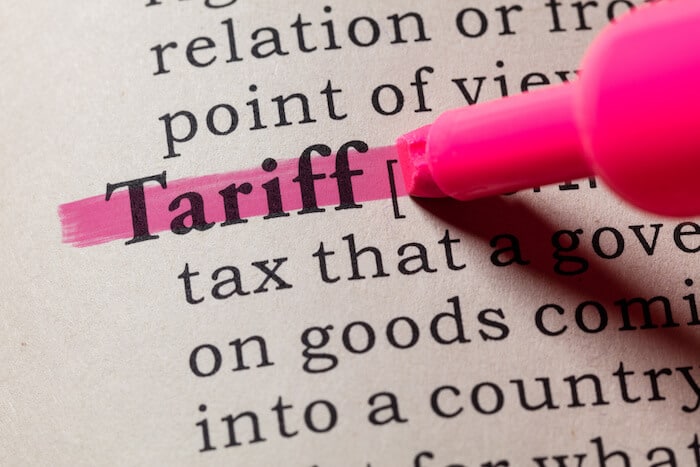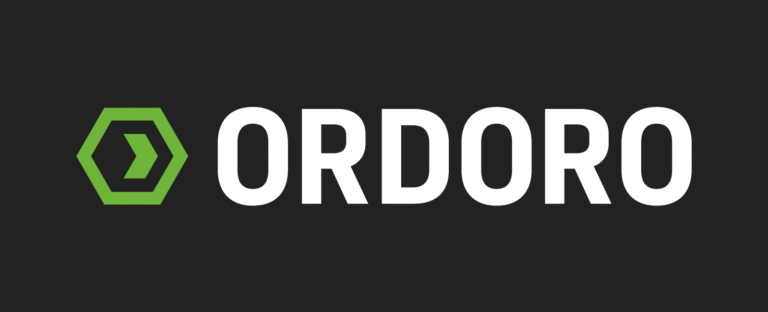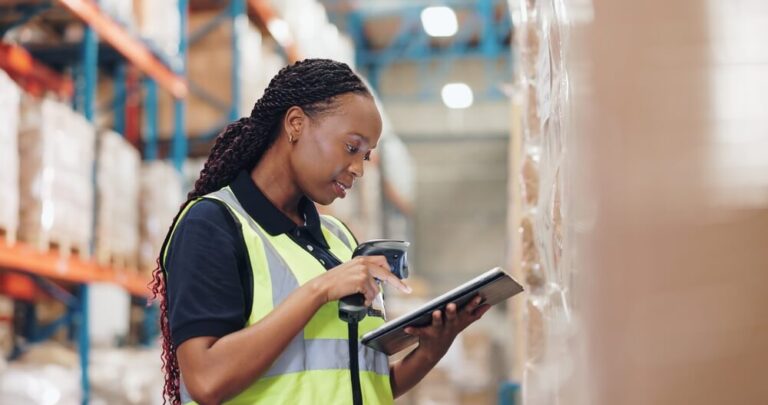No one likes to talk about taxes, and tariffs on imports are no exception. It’s a topic that many entrepreneurs avoid when planning out the design and manufacturing of their products — and that’s a mistake. Tariffs can be a considerable portion of your total cost of goods. Not only do you spend money to pay the fees, but if you get something wrong, your products could end up stuck in customs.
These are not insurmountable problems — every exported product deals with the system. For your product’s success, you need to understand what tariff rates are, how products are classified, how they’re applied, and how they’re changing. And that means you need to understand both the Harmonized Tariff Schedule and the Harmonized System.
Fortunately, we can help simplify it all so you feel empowered to move forward with your incredible idea. This article will start with an explanation of what the Harmonized Tariff Schedule and Harmonized System are, cover how they impact new products, and finish with a look at new regulations coming in 2022. We’ll also offer some recommendations on navigating this important aspect of bringing a product to market.
What Are the Harmonized Tariff System and a Harmonized Tariff Schedule?

This has been going on for millennia. Ancient texts are full of details about tariffs and complaints about how high they are. Everything worked fine until the industrial revolution happened, and world trade got complicated with each company classifying products their own way.
The industrialized countries realized they needed to all get on the same page, and after much back and forth, a system called the Geneva Nomenclature was released in 1931 but not widely used. In 1974, wealthy countries adopted the Customs Co-operation Council Nomenclature. This was then replaced in 1988 by the Harmonized System Convention, officially called the Harmonized Commodity Description and Coding System. Mercifully, most people call it the Harmonized System, or the HS. The full history is outlined in the 2018 HS document if you’re interested.
The HS finally created a consistent way to classify almost every product. Countries no longer had to make their own descriptions. They just had to assign a tax to each item covered. It provided a way to collect data on what goods are being exported and imported around the world. Around 157 countries work on the HS, and more than 200 customs administrations use it around the world. They also set it up to be reviewed every five years because products are always changing and new technologies come to market. The last standard, HS2017, was replaced by HS2022 on January 1, 2022.
Referred to as “a universal language for international trade,” the Harmonized System is managed by the World Customs Organization (WCO). They work as an independent entity to create a hierarchical structure that consists of numerical codes and descriptions of products. The classification system uses six digits to group products into chapters, then headings, and then sub-headings to get more specific.
As an example, a chocolate bar that has no filling would use the HS code of:
1806.32
- Chapter 18 — Cocoa and Cocoa Preparations
- Heading 06 — Chocolate and other food preparations containing cocoa
- Sub-heading 32 — Not filled
Don’t worry, there are online tools and experts to help identify the correct number for your product. We’ll cover that later. For now, just know you need that tariff classification number to figure out how much you will need to pay.
And to find that tariff, you need to locate the tariff table for the country you want to import into. For the U.S., that’s called the Harmonized Tariff Schedule of the United States. People abbreviate it as both HTS and HTSUS. Once the HS was put in place, the U.S. aligned its tariff system to use the same numbering.
Also, to get more specific, the HTS codes include additional local sub-headings. In our chocolate example, the amount of fat in a chocolate bar can change the import tax, so different levels have different sub-headings.
The Harmonized Tariff Schedule is maintained by the United States International Trade Commission (USITC) and administered by the U.S. Customs and Border Protection (CBP) agency.
The country of origin also has an impact on the duty charged. The HTS includes information on how the tariff may be higher, lower, or completely eliminated based on what country the product is coming from. Make sure you check for country of origin notes in the HTS or in referenced appendices, like the China Tariffs amendment.
For example, HTS number 1806.32.06 refers to unfilled chocolate bars with less than 21% milk solids, and the tariff is 4.3% plus $0.372 per kg instead of the flat 5% with more milk solids.
It’s easy to confuse the HS and the HTS, but to sum up: The Harmonized System defines how your product is classified around the globe. The Harmonized Tariff Schedule tells you if your product has a tariff in the United States, if there are additional sub-headings, and what the tax is.
Why Should You Care About the Harmonized Tariff Schedule?

When developing a product, we spend a lot of time looking at ways to keep the costs of materials and manufacturing down, to maximize our profit while balancing price competitiveness. Tariffs can be zero with free trade agreements, or 25% or higher if countries are engaging in a trade dispute. This variation has a direct impact on your costs and therefore your price and your profit.
That is why you and your product development team, as early in the product development process as possible, should ask and answer these four questions:
1. How Much Will It Cost to Import Your Product?
As mentioned above, figure out your HS number and then look it up on the Harmonized Tariff Schedule and get the tariff you will be charged. Then factor that price into your cost model. Keep this up to date as your design and perhaps where you make your product changes.
2. What Are the Tariffs on the Components and Raw Materials You Need to Import for Manufacturing?
We’ve mostly focused on the import duties applied to your finished product. But if you’re importing components or raw materials in order to make your product, there may be import taxes you have to pay. And those costs must be factored into your cost model and should impact your decisions on what your supply chain looks like. You’ll need to look in the Harmonized Tariff Schedule for the country you’re manufacturing in.
3. Can You Change Your Product to Reduce the Tariff?
Small changes in a product can sometimes change the Harmonized System code for a given product. That’s because countries use tariffs to drive behavior. As we will see, the 2022 HS and HTS use classifications and tariff levels to encourage sustainability. This may make using a green material or adding a sustainability feature more attractive.
4. Should You Change Where You Make Your Product to Reduce Tariffs?
This is a big question. People often choose a given country for manufacturing because of lower labor or tooling costs. But a high tariff can remove that advantage in the blink of an eye. When evaluating manufacturing partners, make sure you look up your product’s code in the HTS to get the specific tariff for imported products from that country.
All of those questions deal with cost. In addition, if you do not use the HS and HTS correctly, your products may be delayed by customs. Keeping accurate documentation for your finished goods is critical to a stress-free importation.
Changes to the Harmonized System in 2022

The most important new classifications or improved definitions are for:
- Electronic waste
- Hydrocarbon gasses
- Smartphones
- Unmanned aerial vehicles
- Tobacco and nicotine products that don’t involve burning
- Heavy-duty vehicles with electric motors, including new sub-headings for fully electric and hybrid vehicles
- Additive manufacturing equipment (3D printers)
- Medical rapid diagnostic kits
- Kits for medical clinical trials
- Cell cultures and cell therapy products
- Products that might also be used by terrorist groups
- Materials that are controlled under various other international agreements
That covers the classification. As of January 1, 2022, this new Harmonized System is in effect, and the United States International Trade Commission has modified the HTS to align with the new HS. Do note that legislation assigns specific tariffs and can change at any time.
Anyone importing an existing product or planning to import a new product needs to review the new HS and HTS for their supply chain and their product. All shipping documentation needs to be updated if the codes have changed for your product. In addition, countries may change tariffs because of the new classifications.
Factor the Harmonized Tariff Schedule Into Your Product Development

Factor tariff costs into every step of your product development process that involves estimating costs, even in the early ideation states when you are evaluating different approaches. And it should certainly be a key factor in choosing your manufacturing partner and in which country you choose to make your product.
Some useful resources are:
- The U.S. International Trade Commission has lots of useful tariff information
- The Harmonized System Database is an online tool for finding your product’s classification and specific values in the tariff database
- The HTS Search is an interactive tool for searching American specifications
If you spend some time with these tools, you may have questions. And that’s where an expert on product import and export comes in handy. Working with a comprehensive solution provider like Gembah not only gives you the expertise you need, but our knowledge about trade and tariffs can be a game changer.
That knowledge is integrated into our product development process, resulting in an accurate cost analysis that includes tariffs and duties where you’re manufacturing for the parts and materials that go into your product as well as what you’ll pay to import your finished product to the United States.
Let’s be honest, the Harmonized System and the Harmonized Tariff Schedule are not the most exciting or glamorous part of getting your product to market, and the various options and potential pitfalls can be daunting. Reach out to Gembah today and let’s talk about how to get you started on your journey. We’re the type of people who actually get excited talking about trade tariffs.
![Your Easy Guide to the Harmonized Tariff Schedule [2022]](https://gembah.com/wp-content/uploads/2022/07/world-map-with-export-and-import-concept.jpeg)


